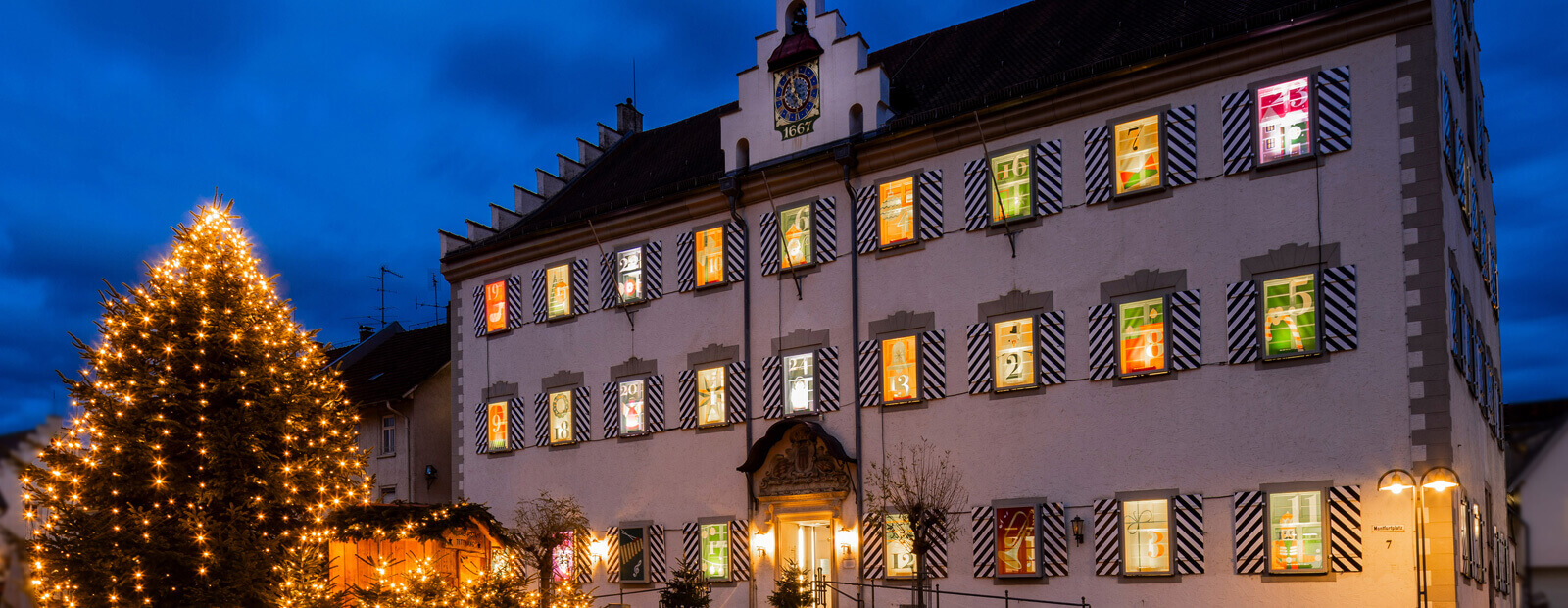i

Die Aufgabe
Konzeption
Design
Das Rathaus in Tettnang sollte mit insgesamt 26 „Fenster-Türchen“ ausgestattet werden, die ein einzigartiges Design widerspiegeln sollten. Jedes Türchen bestand aus einem Holzrahmen, der mit einem speziellen Stoff bespannt war, hinter dem eine LED-Leiste für die Beleuchtung sorgte. Alle Rahmen waren miteinander verbunden und ließen sich zentral in Licht und Musik steuern. Täglich um 17.00 Uhr wurde ein „Fenster geöffnet“ durch eine Musik und Lichtinszenierung. Das Design jedes einzelnen „Türchens“ sollte nicht nur die festliche Weihnachtszeit widerspiegeln, sondern auch die kulturelle Bedeutung der Stadt hervorheben.
Die Umsetzung
Unsere Agentur war für die kreative Gestaltung der 26 Fenster verantwortlich, wobei wir besonderen Wert auf eine harmonische Verbindung von Tradition und Moderne legten. Die Herausforderung bestand darin, ein Design zu entwickeln, das die historische Architektur des Rathauses würdigt und gleichzeitig eine moderne, frische Atmosphäre ausstrahlt – ein Design, das Kinder und Erwachsene gleichermaßen anspricht.
Jedes der 26 Fenster wurde mit liebevollen Illustrationen gestaltet, die die zauberhafte Atmosphäre der Adventszeit einfangen. Dabei wurden sowohl verspielte als auch edle Gestaltungselemente miteinander kombiniert. Die Türchen verbinden klassische Weihnachtsmotive wie Tannenbäume, Schneeflocken und Lichter mit kreativen, modernen Interpretationen, die jedes Fenster lebendig und einzigartig machen.
Die Illustrationen fügen sich nahtlos in den Charme des Rathauses ein, indem sie historische Elemente wie das Schloss selbst in eine moderne, aber dennoch festliche Bildsprache übersetzen. Die Farbwahl orientiert sich an traditionellen Weihnachtsfarben, wird aber durch edles Gold veredelt, um dem Projekt eine luxuriöse Ausstrahlung zu verleihen.
Sie haben Fragen?

Hubertus von Kolkow
Leitung Markenberatung/Strategie

